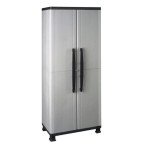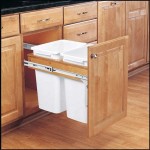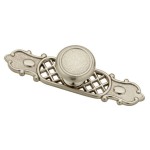Understanding 2-Drawer File Cabinet Lock Mechanisms
Two-drawer file cabinets are commonly used for storing sensitive documents and materials in offices, homes, and various professional environments. The security of these cabinets is largely dependent on the quality and functionality of their locking mechanisms. Understanding the different types of locks available for 2-drawer file cabinets, their strengths, and their potential vulnerabilities is crucial for ensuring adequate protection of stored contents. This exploration will delve into the components, functionality, and security measures associated with 2-drawer file cabinet locks.
Types of 2-Drawer File Cabinet Locks
Several types of locking mechanisms are employed in 2-drawer file cabinets, each offering varying levels of security and ease of use. The most common types include cam locks, gang locks, and keyless entry systems. Each system has merits and demerits. Understanding the construction and operational principals of each type is key to selecting the best file cabinet solution for a given application.
Cam Locks: Cam locks are among the simplest and most cost-effective locking mechanisms used in file cabinets. A cam lock consists of a cylinder which rotates within the cabinet's frame, typically activated by a key. At the end of the cylinder is a cam, a flattened piece of metal that rotates with the cylinder. When the key is turned, the cam rotates, engaging a locking bar or mechanism that secures both drawers of the file cabinet. This type of lock usually features a simple tumbler mechanism. Cam locks are widely used due to their affordability and ease of installation, but they are generally considered less secure than more complex locking systems. The simplicity of their design makes them susceptible to picking or forced entry. The durability of the lock depends on the quality of the materials used in its construction. Lower-quality cam locks may be easily damaged or broken, compromising the security of the file cabinet.
Gang Locks: Gang locks offer a more robust security solution compared to standard cam locks. A gang lock system typically involves a single locking point that controls the locking of all drawers simultaneously. This central locking point distributes the locking force more evenly across the cabinet, making it more resistant to forced entry. The mechanism typically utilizes a series of interconnected bars or levers that engage with each drawer's locking components. When the key is turned, the entire system is engaged, securing each drawer in place. Gang locks are often found in higher-end file cabinets and are preferred in environments where a higher level of security is required. Some gang locks may be designed with specific security features, such as anti-pick mechanisms, which further enhance their resistance to tampering. The complexity of the system makes them more expensive to manufacture and install, but the enhanced security benefits often outweigh the cost. The interconnected nature of the lock also means that damage to one component can compromise the entire system.
Keyless Entry Systems: Keyless entry systems represent the most advanced type of locking mechanism for 2-drawer file cabinets. These systems eliminate the need for physical keys, relying instead on electronic access control methods such as keypad entry, RFID cards, or biometric identification. Keypad entry systems require users to enter a specific code to unlock the file cabinet. RFID card systems use radio frequency identification technology to authenticate users when a card is presented to a reader on the cabinet. Biometric identification systems utilize unique biological traits, such as fingerprints, to verify the user's identity. Keyless entry systems offer several advantages over traditional key-based locks, including increased security, audit trail capabilities, and ease of management. Administrators can easily add or remove users, change access codes, and track access activity. However, these systems are also more expensive and complex to install and maintain. They require a power source and may be vulnerable to electronic malfunctions or hacking attempts. Furthermore, the reliability of biometric scanners can vary depending on environmental conditions and the quality of the scanner.
Factors Affecting File Cabinet Lock Security
The level of security provided by a 2-drawer file cabinet lock is determined by a variety of factors, including the quality of the materials used, the complexity of the locking mechanism, and the presence of additional security features. The physical construction of the cabinet itself also plays a significant role in the overall security.
Material Quality: The durability and resistance to tampering of a file cabinet lock are directly related to the quality of the materials used in its construction. Locks made from hardened steel or other high-strength alloys are more resistant to drilling, picking, and forced entry than those made from softer metals. The internal components of the lock, such as the tumblers, pins, and springs, should also be made from durable materials to ensure reliable operation over time. Low-quality materials can wear down quickly, leading to lock failure and compromising the security of the file cabinet. The thickness of the metal used in the cabinet's frame and drawers also contributes to its overall security. Thicker metal is more resistant to bending or prying, making it more difficult to force entry.
Locking Mechanism Complexity: The complexity of the locking mechanism directly impacts its resistance to picking and other forms of manipulation. Simple cam locks with basic tumbler mechanisms are relatively easy to pick, while more sophisticated locking systems with multiple pins, security pins, or anti-pick features offer a higher level of security. Keyless entry systems provide even greater security by eliminating the key altogether and relying on electronic access control methods. The design of the locking mechanism should also consider the potential for bypassing or tampering. For example, some locks may be vulnerable to shimming, a technique that involves inserting a thin piece of metal into the lock to manipulate the locking mechanism. To prevent shimming, locks should be designed with tight tolerances and anti-shim features.
Additional Security Features: Certain 2-drawer file cabinets may incorporate additional security features to further enhance their protection. These features may include reinforced frames, tamper-resistant hinges, and internal locking bars. Reinforced frames provide additional structural support, making it more difficult to pry open the cabinet. Tamper-resistant hinges are designed to prevent the cabinet from being opened by removing the hinge pins. Internal locking bars provide an additional layer of security by preventing the drawers from being opened even if the primary locking mechanism is compromised. Some file cabinets may also be equipped with alarm systems that trigger an audible alert if the cabinet is tampered with or forced open. These additional security features can significantly increase the overall security of the file cabinet and deter potential intruders.
Maintaining and Troubleshooting File Cabinet Locks
Proper maintenance and timely troubleshooting are essential for ensuring the continued functionality and security of 2-drawer file cabinet locks. Regular cleaning, lubrication, and inspection can help prevent lock failure and extend the lifespan of the locking mechanism. Addressing common issues promptly can prevent minor problems from escalating into major security breaches.
Regular Cleaning and Lubrication: Dust, dirt, and debris can accumulate inside the lock cylinder over time, causing it to become stiff or difficult to operate. Regular cleaning and lubrication can help remove these contaminants and keep the lock functioning smoothly. Use a dry lubricant, such as graphite powder, to lubricate the lock cylinder. Avoid using oil-based lubricants, as they can attract dirt and grime, which can further clog the lock. Spray a small amount of dry lubricant into the keyway and insert and remove the key several times to distribute the lubricant throughout the cylinder. Wipe away any excess lubricant from the exterior of the lock. Regularly cleaning the exterior of the lock with a damp cloth can also help prevent the buildup of dirt and grime.
Inspecting for Damage: Regularly inspect the lock cylinder, key, and surrounding hardware for signs of damage or wear. Check for bent or broken keys, loose screws, or cracked plastic components. Replace any damaged parts immediately to prevent further damage and maintain the security of the file cabinet. Inspect the locking bar or mechanism that engages with the drawers to ensure that it is functioning properly. Make sure that the locking bar moves freely and engages securely with the drawer locking components. If you notice any signs of damage or wear, consult a locksmith or file cabinet repair specialist for assistance.
Troubleshooting Common Issues: Several common issues can arise with 2-drawer file cabinet locks, including sticky locks, broken keys, and lost keys. A sticky lock may be caused by dirt or debris inside the cylinder, or by a damaged or worn tumbler. Try cleaning and lubricating the lock cylinder to see if that resolves the issue. If the lock is still sticky, you may need to have it professionally repaired or replaced. A broken key can be difficult to remove from the lock cylinder. Try using a pair of pliers to gently extract the broken key. If the key is deeply embedded in the cylinder, you may need to consult a locksmith for assistance. If you lose your key, you will need to have a new key made or have the lock re-keyed. A locksmith can typically create a new key based on the lock's serial number or by disassembling the lock and creating a key that matches the tumbler configuration.

2 Drawer File Cabinet Bar

Staples 2 Drawer Mobile Vertical File Cabinet Letter Size Lockable 27 95 H X 14 9 W 24 4 D Black 59555 25420

Progressive Fcl 2 21 1 Drawer File Cabinet Locking Bar Use 40mm Padlock Newegg Com

Lavish Home 2 Drawer File Cabinet With Lock And Rolling Wheels Black

Lavish Home 2 Drawer File Cabinet With Lock And Rolling Wheels White

Ml2 2 Drawer Multi Bar

Lavish Home 2 Drawer File Cabinet With Lock And Rolling Wheels White

Kaba Simplex Pushbutton File Cabinet Lock Bar 2 Drawer 29

Merax Black 2 Drawers File Cabinet With Lock Fully Assembled Except Wheels Wf191011aab The Home

Hon 600 42 W X 18 D Lateral 2 Drawer File Cabinet With Lock Charcoal Office








